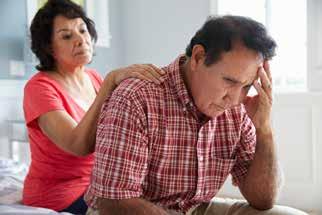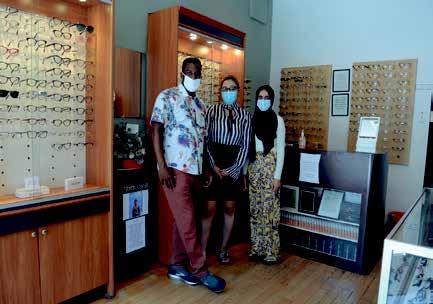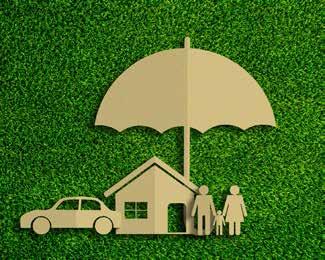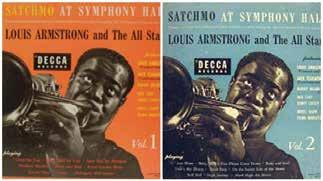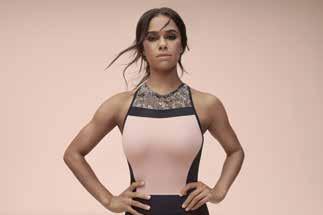
22 minute read
Health
Rutgers Cancer Inst. Expert Explains Triple Negative
Advertisement
Breast Cancer Among African American Women
Triple-negative breast cancers are clas- different risk factors for breast cancer sified by these three pro- this disease. For instance, (TNBC) is a sub- teins, which guides treat- younger age, premenotype of breast cancer that ment management. Since pausal status, having more is aggressive by nature triple-negative breast children, not breastfeedwith a complex biology. cancer does not have any ing or shorter duration of Studies have shown a high of these receptors, it tends breast feeding, and obesiprevalence of triple-nega- to be more challenging to ty are all risk factors. Intive breast cancer among treat. Women with TNBC terestingly, most of these younger African Ameri- have a high frequency of are typically the opposite can women and those of metastasis to the lungs, of the risk factors associatAfrican descent. Coral liver and brain leading to ed with developing breast Omene, MD, PhD, med- poor survival. Compared cancer. The increased ical oncologist at Rutgers to other subtypes of breast risk for this population as Cancer Institute of New cancer, there has been a well as for women of AfJersey whose clinical ex- lack of effective therapies, rican descent (in particupertise focuses on triple resulting in a poor prog- lar from West Africa and negative breast cancer and nosis. This is particularly sub-Saharan Africa) sugother forms of breast can- true for young African gests genetic components cer, translational research American women and of geographically defined and clinical trials, shares women of African de- African ancestry may be more on this topic. scent. associated with hereditary
What is triple nega- Not only is there a susceptibility for specific tive breast cancer? higher prevalence of patterns of breast cancer
TNBC does not pos- TNBC in these women, development. There are sess the estrogen receptor, they tend to present at multiple factors besides progesterone receptor, and a more advanced stage. presenting to the clinic human epidermal growth Notably, compared with at a more advanced stage factor 2 receptor. Most other subtypes, they have that contribute to worse
clinical outcomes for African American women with this disease. They include health care access barriers, one or more underlying medical conditions, income disparities and experiences of societal inequality.
There has been ongoing research in this area at Rutgers Cancer Institute of New Jersey from multiple investigators. To highlight a few areas of personal interest, I have been working on a translational project modifying the risk for developing triple negative breast cancer in a TNBC mouse model. Currently, in collaboration with several researchers at Rutgers Cancer Institute, I am investigating the alterations in the genomic landscape of African American Women with TNBC and investigating the association of obesity in these women and responses to therapy. I am also a member of the Center for Cancer Health Equity in partnership with the Rutgers School of Public Health which works to evaluate clinical trial enrollment, address catchment area burden and foster catchment area and disparities research.
It is essential that we understand the potential molecular mechanism(s) by which biology and disparities may interconnect to result in aggressive TNBC development in African American women. This may lead to the development of models that determine specific risk, increase access to early detection, care and clinical trial participation, in addition to the implementation of health policies to eliminate disparities.
The Carolina Breast Study; Women’s Circle of Health Study, Newman and Kaljee, JAMA Surg 2017; Dietze E et al., Nature Reviews, 2015; Xing CY et al, Cancer Epidemiol Biomarkers Prev, 2020.
Shop Smart This October to Benefit Breast Cancer Patients
(Statepoint)
It is not always easy to tell how your charitable dollars are going to be used, especially during National Breast Cancer Awareness Month.
Honored every October, this is a time of year when many companies use pink logos on product packaging to symbolize support for breast cancer-related charities. Unfortunately, these symbols are not always backed by a promise that proceeds will directly support research or those living with breast cancer.
In the case of Susan G.
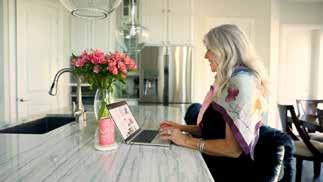
PHOTO SOURCE: Courtesy of Susan G. Komen
Komen and its Live Pink lect products to Komen. As program, the organization many consumers are doing works closely with all its much of their shopping onpartners to ensure program line these days, Komen has details are transparent to created a site that makes it consumers. And this year, easy and safe to shop for a 18 companies are donating cause. Visit livepink.org to a percentage of the pro- shop and learn more. ceeds from the sale of se- “It just takes a moment to get involved and make a difference in the fight against breast cancer,” says Sarah Rosales, vice president of Corporate Partnerships, Susan G. Komen. “We’re honored to have so many partners giving consumers an opportunity to support breast cancer patients and fund lifesaving research.”
Want to ensure you are making the biggest impact possible? Before making any purchase you assume benefits the fight against breast cancer, Susan G. Komen recommends asking the following questions: 1. Who is the program supporting? Is it clear what charity is benefiting from the program? Susan G. Komen, for example, requires all of its partners to clearly state that their program benefits the organization. In many cases, they will include Komen’s iconic logo on their packaging. 2. How will the charity use the donation? It should be clear where the proceeds go. Look for programs that support organizations which take a 360-degree approach to fighting the disease by funding breakthrough research, supporting compassionate public policy and providing patient support. 3. How is the program structured? Transparency is key. Is the company clearly stating how the money is raised and how much will be going to charity? For example, if it’s a donation per purchase structure, ask how much of the purchase price benefits the charity. Is there is a minimum or maximum contribution? Is it a flat donation regardless of sale?
By shopping savvy this National Breast Cancer Awareness Month, you can ensure your purchases are making the biggest impact possible.
HARLEM COMMUNITY NEWSPAPERS
Triple Negative Breast Cancer Survivor: My Story
By Pat Stevenson
When Donald Trump said getting COVID-19 was “A Blessing,” I first said to myself there he goes again saying something outrageous. However, as I thought about it further, I believe my diagnosis and treatment of Triple Negative Breast Cancer has been “A Blessing” in my life.
It was after I was diagnosed that I learned that “triple negative” is an aggressive form of breast cancer that primarily affects African-American women. My diagnosis came at a time in my life when I was in the midst of a very stressful event and I believe at the time I was probably suffering from some kind of depression. I agree with Ricki Farley and believe my onset of breast cancer may have been triggered by stress. So now that I was diagnosed, my bigger nightmare was having a mastectomy, since I am also diabetic. Being diabetic, every cut takes much longer to heal on me. I remember having a tooth extracted and it was six months for that area to heal.
So my diagnosis and treatment in 2017 quickly launched me from being depressed to “battle mode.” I now had to fight for my life. Some people choose to keep their illness private. I chose to share mine with family, friends, collegues and readers. This was scary, this “triple negative” and I knew that I needed as much help as I could get. As I said I was in some kind of depression so my health insurance, rent and everything was behind. As I reached out and people asked how they could help, I was motivated to start a gofundme. The fact that more than 180 individuals and organizations reached out with donations and many just personally handed me checks, was remarkable to me. Within a month, my rent was paid up, my health insurance paid up and I was ready to go on the cancer treatment journey with chemo and surgery for 5 months.
Because I also suffered from diabetes, high blood pressure and high cholesterol, I could not afford any type of infection, as the chemo drained my immune system, so I quarantined myself from everyone except the couple of people who were
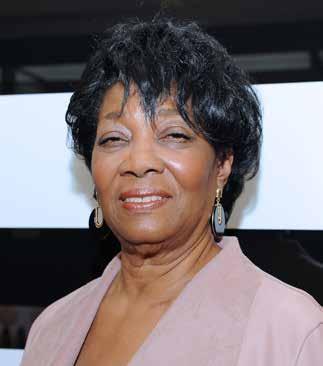
assisting me at the time. I don’t know how I would have made it through without the help. My son, Dominic was there for anything I needed him to do. My friends Thelma Russell and Maria Caveghni went to every doctors appointment and chemo treatment with me. There are so many tests you have to take before and during treatment. Thelma would come with her note book and then call me in advance to make sure I did not miss any appointment. Maria would wait for hours with me (it took 3-5 hours for each chemo prep and treatment). My sister Lil Nickelson stepped in and pulled the paper together each week for me to get it to the printer. After chemo, many days I was only able to get together enough strength to get out of bed and go to the bathroom. I was told I was given the strongest chemo (nickname “red devil”). It literally turns your urine orange right away. My cousins Tony and Laura Rogers gave me ki-energy treatments every week prior to my chemo treatment and Laura, who is a holistic practitioner, gave me some holistic products to help with my side affects and to build up my body which, the chemo was tearing down. My doctors told me I did better with side affects than many. I credit Laura Rogers for that. You can reach Laura at (917) 806-1801 or email at info@kienergycenter.com
Before I began treatment, I made sure my will was in order. I assembled a board ready to take over Harlem News which included and I thank them for their support – Tony Rogers, Vincent Morgan, Cheryl Wills, Thelma Russell and Maria Caveghni. I also want to continue to thank all those who contributed to my gofundme.
It is now 3 years later and I remain cancer-free. However, cancer-free does not mean symptom-free. Chemotherapy changes many cells in your body, especially it seems with your hands and feet. Yes all my nails on my hands and feet turned Black. The color came back over time (almost a year), however I continue to have neuropathy in both hands and feet. I am not complaining, just saying. Many people believe when you say you are cancer-free that you are all healed back to normal. I feel “Blessed.” I have learned to slow down and enjoy life – one day at a time. Being quarantined during COVID-19 brought back memories of my days on chemo being quarantined at home. However, since I already had that experience I believe it was easier for me than many. I am now being called on by women diagnosed with breast cancer for advice. I am happy to share all that I know. One thing I want to share – if you are diagnosed with “triple negative” you want an oncologist who has experience with “triple negative.” My oncologist and team is at New York Presbyterian Hospital.
Ricki Farley has started a non-profit to address cancer in Black Women – TOUCH. I was also blessed to have spoken to Ricki Farley extensively when I was diagnosed and she guided me with the right questions to ask and how to research the right oncologist. It was because I reached out and made my diagnosis public that I was introduced to Ricki, who also is a triple-negative breast cancer survivor. October is “Breast Cancer Awareness Month.” Ladies get your mammogram and exam yourself of- Harlem Community Newspapers | October 15. 2020 ten. God is Good. 13
HARLEM COMMUNITY NEWSPAPERS HEALTH Ricki Fairley: Triple Negative Breast Cancer Survivor, TRODELVY Advocate
By Ursula V. Battle, Baltimore Times
Ricki Farley had a would forever change thriving market- her life. ing agency in At- “I was told I needed to lanta, GA. The services get a biopsy,” said Farof the successful Dart- ley who grew up in Silmouth College graduate ver Spring, MD. “I was were highly sought after going on a business trip by clients who includ- and literally I was on the ed the likes of former phone with my doctor. U.S. President Barack The doctor told me I had Obama. breast cancer. Not just
“I was your typi- breast cancer, but Triple cal Superwoman of the Negative Breast Cancer. world,” recalled Farley I was also told there was who was 55 at the time. no good treatment and I “A black woman trying would die. She gave me to take care of everyone. two years to live.” I was on four planes a According to the week. I was the bread- American Cancer Sociwinner for my family, ety, once a breast cancer and my baby daughter diagnosis has been made was in China. I put off using imaging tests and my mammogram check- a biopsy, the cancer up until she came home cells will be checked from school. for certain features. If
“Once she came the cells do not have eshome, I went to see my trogen or progesterone doctor. The doctor found receptors, and also do a lump. It was the size of not make much of the a peanut and under my HER2 protein, the cannipple. Literally as I was cer is considered to be walking out the doc- Triple-Negative Breast tor’s office, I was told Cancer (TNBC). to come back the next “I went home to the day for a mammogram. I breast cancer world,” did. They made me wait said Farley. “I had a while they did additional double-mastectomy by films.” choice, and radiation.
Farley, who is now The doctor said I was 63, says what came next metastatic and that I
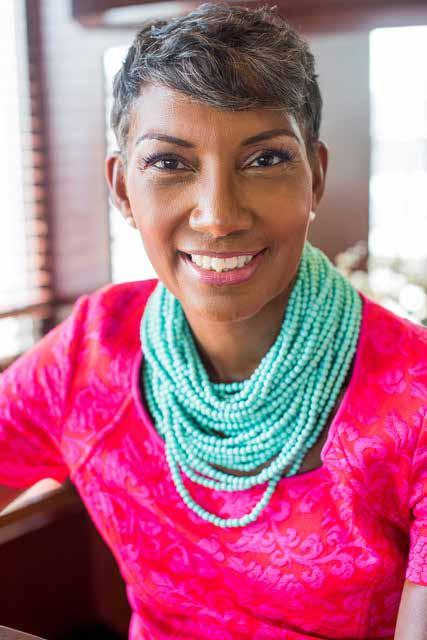
should get my affairs in order. I told my doctor, ‘you, me, and God have to work this out.’ I also said, ‘I have to put my daughter through Dartmouth and I want to see her graduate.’”
TNBC differs from other types of invasive breast cancer, in that it grows and spreads fast-
DON’T MISS ANOTHER ISSUE SUBSCRIBE TODAY! GO TO PAGE 23 Visit our website to learn more: www.harlemcommunitynews.com
er, has limited treatment options, and a worse prognosis.
What came next prompted Farley’s doctor to call the grandmother of two, ‘her miracle patient.’
Farley serves as the vice president of Strategic Partnerships and National Programs for Sisters Network Inc. She is building a movement to address breast cancer in black women, with the goal of reducing the population’s mortality rate. She serves on the Board of Trustees for the Triple Negative Breast Cancer Foundation where she spearheads the Marketing Committee and directs multicultural outreach. She also is an Ambassador for TRODELVY, the first antibody-drug conjugate (ADC) approved by the U.S. Food and Drug Administration (FDA) for the treatment of adult patients with metastatic TNBC who received at least two prior therapies for metastatic disease.
Farley calls other woman diagnosed with TNBC her “Breasties.”
Developed by Immunomedics, TRODELVY is for people whose cancer has spread and does not respond to other treatments. The FDA announced it fasttracked its approval process to help these ‘atrisk’ patients during the COVID-19 pandemic.
TRODELVY combines three components: an antibody, to direct delivery of the cancer-killing therapy; a linker, which joins the antibody and anti-cancer drug; and an anti-cancer drug, which is most often a chemotherapy drug.
Farley said she cut out the “cancers in her life.” She sold her house, let her business go, and moved back to Maryland.
Farley holds an MBA from Kellogg School of Management at Northwestern University, is the President Emeritus of the Black Alumni of Dartmouth Association, and writes regularly for BlackDoctor.org.
“I feel blessed to be alive and see my daughter graduate from college,” said Farley. “We as black women, wear this crazy cape we don’t take off. We put everyone before us and it’s killing us. I paddle board as much as I can, and I have a dance party every morning. You have to find an outlet everyday to give yourself peace.”
HEALTH The Anatomy Of A Breast Cancer Survivor: ‘Early Detection Saved My Life’
BY LYNDSAY LEVINGSTON CHRISTIAN · OCTOBER 6, 2020
Ireceived a life-changing overwhelming journey of phone call July 11, 2019. I treatment and multiple surremember it vividly. I was geries began. It was hard to sitting in the bathroom, ner- process, but I strapped on the vous to receive the test results armor of God and prepared of a regular mammogram, for battle. 3-D mammogram (which I I froze the remaining eggs didn’t know existed), breast in my (aged) ovaries before ultrasound and a very uncom- powering through 15 ardufortable and slightly painful ous rounds of chemotherapy biopsy of an almond-sized over a series of four months. lump in my right breast I was poked and prodded with that I’d discovered through needles and IVs more than I self-examination. could count. The medicine
“I’m sorry, Lyndsay, it’s pumped through my body breast cancer,” affirmed the through a port inserted unradiologist. derneath my skin below my
I cried. My life would left clavicle. It made me exchange forever. Triple-nega- tremely drowsy and fatigued. tive breast cancer, stage 2B, However, I maintained a very an aggressive form of the healthy appetite and guzzled chronic illness more com- Ensure vanilla for its nutrimon in Black women who ents, which was my grandare diagnosed. Statistics show mother Wade Ella’s favorite. Black women younger than I knew she was with me, in 40 have higher rates of breast spirit, every step of the way. cancer compared to white Dr. Terry confirmed that women. We also tend to be di- I would indeed lose every agnosed at a younger age than strand of hair from chemo, so white women. Facts. I’m one I proactively shaved it off so I of them. wouldn’t have to deal with the
Everything I had worked emotional trauma of hair loss. so hard to build in New York Thankfully, the chemoCity as a media personality therapy melted away the cancame to a screeching halt. All cerous breast tumor within of the hard work, and so close a few rounds. I learned that to that big break, then boom. chemo doesn’t know which To be honest, I needed a break cells to attack, so it fights bad from the hustle and bustle. Of and good cells. This attributes course, a vacation in the Mal- to those awful side effects indives would’ve been my pref- cluding hair loss, darkening of erence, but my health needed finger nails, etc. I later found my critical attention. out, it destroyed my ovaries.
I hopped on a one-way (More on that in part 3 of the flight home to Houston for ‘Anatomy of a SurThriver’ a consultation with the best series) Over the course of breast surgeon, Dr. Jamie those intense four months, I Terry, a brilliant, Black phy- rocked custom lace front wigs sician, believer and family designed by my uber-talented friend. She was the captain hairstylist, Brittany, to hide of the ship who orchestrated my bald head. Believe it or an incredible team of medi- not, I had the strength to take cal professionals–Dr. Kemi Zumba and boxing classes. I Nurudeen (fertility specialist), was adamant about staying Dr. Gurjyot Doshi (oncolo- active as much as my body gist), and Dr. Sean Boutros could endure. I was deter(plastic surgeon). Then, the mined to fight the c-word and knock it out. Symbolically, I rang the bell two days shy of ringing in 2020 — entering a new year having successfully completed treatment. I proudly wore a figurative heavyweight champion belt around my 28-inch waist.
I learned during treatment that I was born with a BRCA 1 gene mutation that puts me at a higher risk for breast and ovarian cancers. My own DNA added another rather complicated layer to my journey. Dr. Terry said at some point in my life I would’ve been diagnosed with breast cancer. Thank God it was detected early and could result in a positive prognosis. I call myself the Black Angelina Jolie. You may recall the former Mrs. Brad Pitt, who has a family history of both cancers, opted for a prophylactic bilateral mastectomy (surgery to remove one or both breasts to reduce the risk of developing breast cancer) and hysterectomy at age 37 as preventive measures.
In February 2020, I underwent a bilateral mastectomy with breast reconstruction. In a tag-team procedure, Dr. Terry removed my breast tissue; then Dr. Boutros placed in tissue expanders (temporary placeholder, implant-like objects that stretch the skin). I woke up from surgery with a faux chest! I left the hospital the next day with four drains tethered to each side of my body. I lived with those darn things for two months. The healing process took about six weeks, and to be honest, it wasn’t too bad. Upper body movement was limited for the first two weeks – I couldn’t push, pull, sit up, scoot in a chair nor shower without help. When I was finally able to lift my arms over my head, I cheered. Some days I woke up helpless in tears, but I woke up. Some days I danced to Beyoncé.
On Valentine’s Day, I received a life-changing phone call. This time, I cried tears of joy. Dr. Terry said, “Your scans from surgery came back all clear, there’s no sign of cancer!” Praise God! My upcoming April birthday would be a celebration of rebirth. I set-up my ring light, beat my face, put some gel in my chemo curls and facilitated my own photo shoot in the living room with my iPhone. Come on now, self-photography!
Months laters, my fantastic, faith-filled plastic surgeon, Dr. Boutros, would perform the exchange surgery to replace the tissue expanders for breast implants. I felt like a woman again. I’m over the hump now and oh so grateful to God for removing the toxins from my body. God aligned the people, medical professionals and resources to get me to the finish line of victory and I am here to cheer on my fellow “breasties.” My therapist reminds me that I experienced a traumatic (health) experience, and that’s true. I’m focused now on healing my mind, body and spirit. The journey continues.
A lot of people didn’t know what I was going through, and I was okay with that. I didn’t look like what I was going through because of God’s grace. When faced with a chronic illness, sharing can be emotionally draining. It caused me to relive that phone call over and over. I wasn’t ready to bare my soul, until now.
The diagnosis strengthened me in so many ways and has dramatically changed my perspective on life. I appreciate the simple things I took for granted – each breath, whiff of fresh air, the sun and trees. Will I be able to breastfeed my children? No. Will I have to visit the doctor more frequently for the rest of my life? Yes. That’s okay. I’m alive!
I’m grateful for it all and I proudly proclaim my crown as a SurTHRIVER! I created this platform to inform, inspire and empower women around breast cancer awareness via my testimony and the testimonies of other amazing SurTHRIVERS. Aren’t we all a SurTHRIVER in our own right? Whether you’ve survived a challenging career, relationship or financial hardship, you overcame it and are now thriving, living your best life now, right?!
What I encourage you to do
Slap on your mask, Sis, and go get a mammogram! You don’t have to wait until you’re 40. It’s never too early. Schedule a test through your gynecologist or a women’s health center in your area. Advocate for a 3-D ultrasound which will offer a more comprehensive picture and analysis of your breast tissue. Confirm with your health provider if it’s covered or if it will require an out-of-pocket fee. If breast cancer runs in your family, schedule a genetic evaluation. Knowledge is power. Early detection saved my life and my mission in life is to help save yours.
What to do if you’re diagnosed with breast cancer
Breathe, pray and trust God. When I was first diagnosed and trying to figure everything out, I discovered hundreds of resources available via nonprofit organizations and groups – free wigs, gift cards for groceries, medicine assistance and so much more. There are centers that offer financial assistance, too, which can be helpful especially to women who aren’t able to work during treatment. God provides.
Lyndsay Levingston Christian is a multimedia talent, host and adjunct professor based in Houston, Texas. Follow her journey via @ lynzchristiantv and join the movement @Sur_Thriver

Together, we offer an affordable Medicare Advantage plan with doctors you trust
Montefiore + Oscar offer:
Monthly premiums as low as $0 Medical and prescription drug deductibles as low as $0 Primary care visit copays for $0 Same-day prescription home delivery for $01
You’ll get up to $4,280 in additional benefits each year, including dental, vision, hearing and an over-the-counter allowance. This is the Medicare Advantage plan you’ve earned.
Call 1-718-514-6274 (TTY: 711) or visit hioscar.com/medicare/bronx to enroll today.

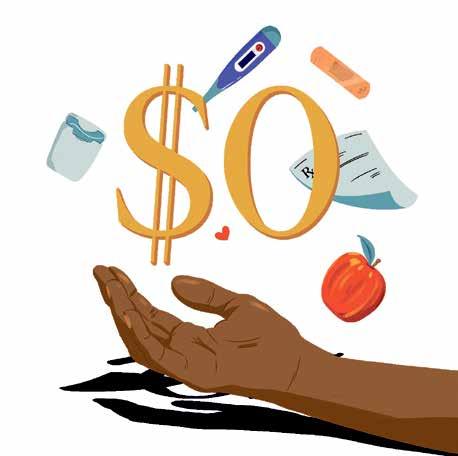
1Same day prescription delivery provided through Capsule pharmacy.
Oscar is an HMO with a Medicare contract. Enrollment in Oscar depends on contract renewal. Other providers are available in our network. H5126_H7322_H8961_MKTSEP20025S_M

